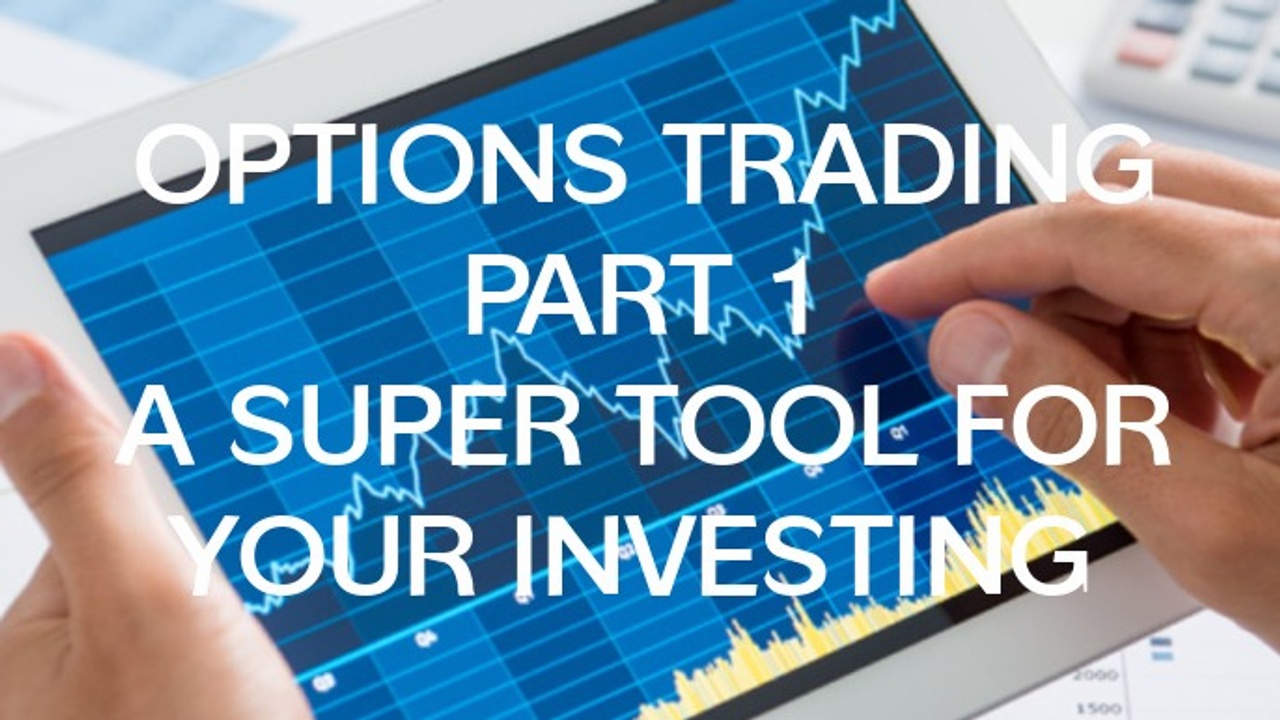
Introduction to Options Trading
Let’s jump right in!
Starting With the Basics of Options Contracts
Options contracts have a reputation for being difficult to understand.
While some options strategies that investors use can take a bit more effort to figure out, each options contract is pretty straightforward.
Just like the name implies, an options contract gives investors the option to buy or sell a stock.
That’s pretty basic, right?
An options contract gives the holder the right (but not the obligation) to buy or sell stock according to the terms of the contract.
Options contracts are very standardised and trade on exchanges just like stocks.
So once you understand the basics of these contracts, it’s very easy to buy or sell these options contracts — just like you would buy or sell shares of stock.
I’ll spend some time explaining how a typical options contract is structured.
In part 2 and part 3 of this short series of articles, I’ll talk more about how to buy and sell these contracts. I’ll also discuss what risks and opportunities these contracts give you.
I gave an in-depth Wealth Builder masterclass on
Options Trading and How to Use Them for Income —
you can access the masterclass here
Options Contracts Give You The Right — But Not The Obligation
The first thing to understand is that when you buy an options contract, you have the right to buy or sell shares of stock. But you don’t have an obligation to buy or sell.
You might be more familiar with this concept in relation to real estate.
Often real estate buyers enter into an options contract when considering purchasing a property. This gives them the right to buy once they’ve done their due diligence.
If the buyer does an inspection and finds that there are problems with the property, they might choose not to exercise their right to buy.
But if the appraisal shows that the property is worth far more than the agreed-upon price, the buyer still has the right to go through with the transaction at the agreed price.
That’s exactly the way an option contract works.
When you buy a contract, you’re purchasing the right to buy or sell 100 shares of the stock according to the terms of that contract (or agreement) – but you are not obligated to buy them.
It’s important to note that each contract usually represents 100 shares (although, confusingly, option premiums quoted on sites like Yahoo Finance, or even CBOE itself, are per share).
Keep this in mind when determining how many contracts to trade.
Understanding the Difference Between Calls and Puts
Options contracts are divided into two primary categories: call contracts and put contracts.
A call contract gives the owner the right to buy shares of stock at a specified price. You can think of this right as being able to call the stock to your account.
A put contract gives the owner the right to sell shares of stock at a specified price. So for these contracts, you can think of putting the stock onto someone else.
When you place an options trade, it’s important to pay attention to whether you’re trading a call or a put contract.
Because these contracts typically trade in opposite directions to each other!
Options Are Available for Most Actively Traded Stocks
In mature markets like the USA, there are typically dozens (and sometimes hundreds) of options contracts for every stock.
Sometimes, new options traders get a bit overwhelmed when they see how many different options contracts are available to trade for each stock.
But once you see how they’re organised and understand the different pieces of each contract, you’ll catch on very quickly.
I covered this in the options masterclass
So let’s take a look at how different options contracts are structured for each actively traded stock on the market.
The Target Price for Your Options Contract
Each options contract has a price that you’re agreeing to pay (or receive) for shares of a specific stock. This price is called the strike price.
Let’s take a look at an example…
You might decide that you want to buy a call option for shares of Apple Inc. (AAPL). Remember, a call option gives you the right to buy shares of AAPL at the strike price.
Let’s say that AAPL are trading at $150 per share, as they have at various points since August 2021.
You might have considered buying an AAPL $150 call contract. That contract would have given you the right to buy 100 shares of AAPL at $150.
The beauty of this option is that if AAPL trades sharply higher, let’s say to $175, you can still buy shares at $150.
If you buy this option, you will have the right to buy the shares at $150 for a predetermined period of time.
That would be a valuable right to have!
But if AAPL continued to trade at $150 – or if the price dropped below $150 – you would not have had any obligation to buy at $150. You would simply have chosen not to exercise your right to buy if AAPL was below the $150 strike price.
Options Have a Limited Shelf Life
It’s important to know that each options contract you trade will have a specified expiration date. Each stock has a series of options contracts for an assortment of dates in the future.
Options contracts typically expire when the market closes on Friday afternoon. And most stocks use weekly expiration dates covering the next four to six weeks.
There are also monthly contracts, which historically get the most use. These contracts typically expire when the markets close on the third Friday of the month.
Depending on which stock you’re considering, there may be monthly options available for six months, a year, or even several years away.
So in our example above, you might choose to buy an AAPL $150 call contract that expires in three weeks.
That contract would give you the right to buy shares of AAPL any time between now and when the market closes on the third Friday from the day of purchase.
Be sure you pay attention to the expiration dates on the contracts you hold in your account.
That way you know to anticipate contract expiry and if the contract should be exercised when the date is approaching.
Exercising a contract is simply going ahead and either buying or selling shares of the stock according to the terms of the contract (ie, at the strike price).
Buying and Selling Options Contracts on an Exchange
Now that you understand the basics – what an options contract is – let’s talk about buying and selling these contracts in your account.
The options we’ll talk about trade on an exchange just like shares of stock.
You can buy them at a price that someone else is willing to sell them for. And if you have a contract in your account, you can sell that contract to another investor.
So even though an options contract is a standardised contract to buy or sell shares of stock, many options traders never actually trade stocks in their accounts.
Instead, they buy and sell the options contracts themselves.
Let’s consider the AAPL $150 call contract that we talked about earlier.
If you own this contract, you actually have two different ways to profit from a surge in AAPL.
First, if AAPL trades up to $175, you could exercise your right to buy the AAPL shares.
In this case, your broker would purchase 100 shares of AAPL at $150 in your account. From there, you could sell those shares in the market for $175, booking a $25 profit per share.
Not bad!
But an easier way to close out your position for a profit would be to sell your call contract.
Since AAPL is trading at $175 — a full $25 above the contract’s agreed-upon strike price — you should be able to sell your contract for at least $25. If you paid, say, $10 per share for the contract, your profit of $15 per share on the option sale is very good!
That’s the way most options traders lock in profits.
Instead of following the terms of the contract, they simply sell the contract on an exchange just like you would sell shares of stock.
Hopefully, this article gives you a good overview of what option contracts are.
Learning new things with lots of new jargon can be a bit of a mind boggling experience at first.
I got really overwhelmed when I first started learning about options contracts.
But like all things, when you understand the basics and have a good structure to follow and build on, it becomes easier and easier.
And once the core understanding is in you, it’s exciting to see how these tools can help you grow your wealth in ways that straight forward investing simply can’t.
There is no better way of accelerating your learning and getting to that solid foundation stage quicker than by signing up for the Options Trading Masterclass that is available online.
You can also click here to go straight to the next article in this series of three.
And remember, your juicy wealthy life is created by the baby steps you consistently take – keep taking those steps.



